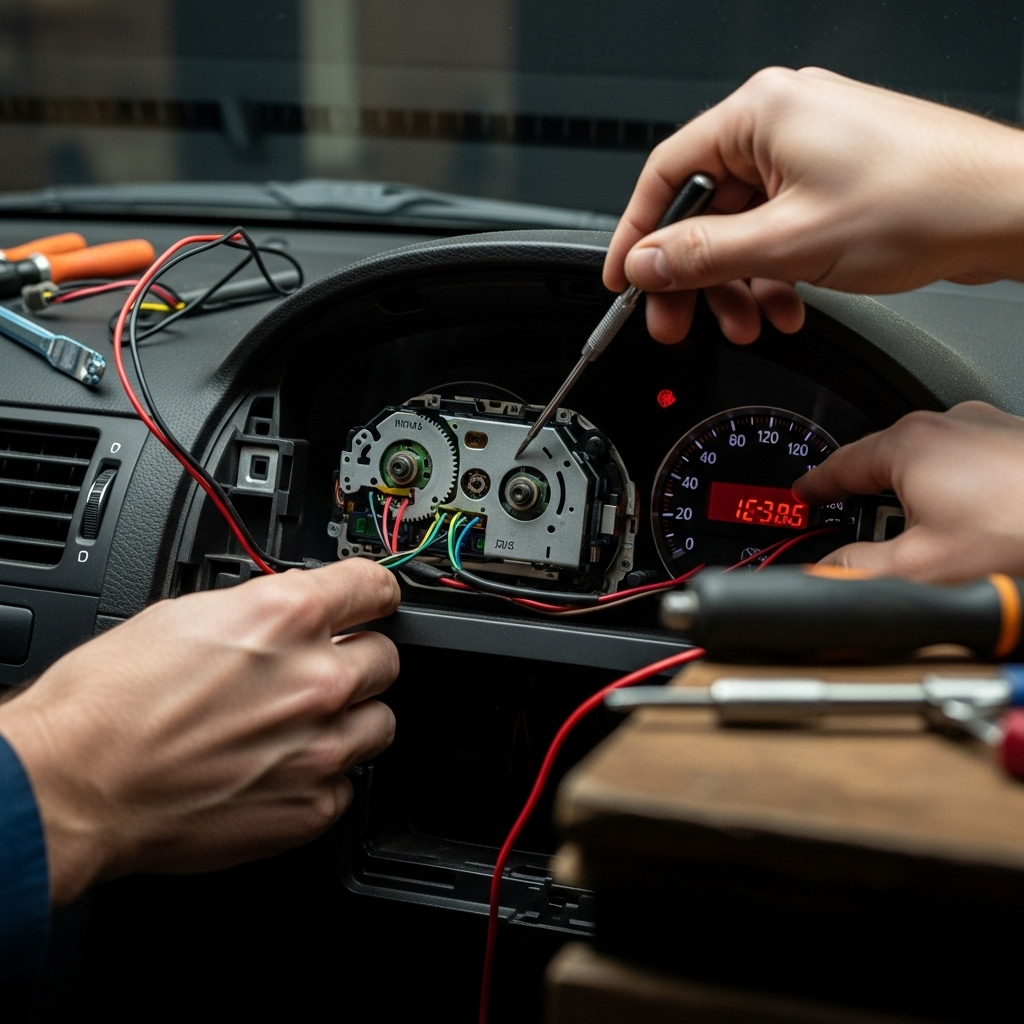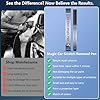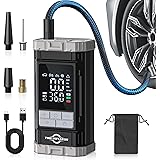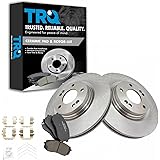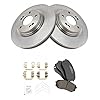Table of Contents
Learning how to disable odometer from reading mileage is a topic that interests many vehicle owners for various reasons, from legitimate testing purposes to unfortunately, fraudulent activities. This comprehensive guide will explore all available methods, their technical implementations, legal implications, and ethical considerations. Whether you’re a car enthusiast looking to test your vehicle’s performance without affecting recorded mileage or simply curious about how odometer systems work, this article provides the detailed information you need to understand this complex subject. We’ll examine everything from basic mechanical interventions to sophisticated electronic solutions, ensuring you have a complete picture of the possibilities and consequences.
Understanding Your Vehicle’s Odometer System
What is an Odometer and How Does It Work?
An odometer is an instrument that measures and displays the total distance a vehicle has traveled throughout its lifetime. Located on the dashboard alongside the speedometer, this crucial component comes in two primary varieties: mechanical and electronic. Mechanical odometers, found in older vehicles, use a complex arrangement of gears and cables that physically turn numbered drums to display mileage. These systems connect directly to the vehicle’s transmission and represent an increasingly rare technology in today’s digital age .
Electronic odometers, now standard in modern vehicles, operate using magnetic or optical sensors that monitor wheel rotations or transmission output. These sensors send electronic pulses to the Engine Control Unit (ECU), which calculates distance based on these signals and displays the result digitally on the instrument cluster. This digital integration makes modern odometers both more accurate and more difficult to tamper with undetected. It’s also important to distinguish between the main odometer, which records the vehicle’s total lifetime mileage, and the trip meter, which measures distance between specific points and can typically be reset by the driver .
Why is the Odometer So Important?
The mileage reading on a vehicle’s odometer serves as a primary indicator of its overall condition and value. As a general rule, lower mileage suggests less wear and tear on mechanical components, which translates directly to higher resale value. This correlation between mileage and value creates the economic incentive for odometer fraud. When consumers purchase used vehicles, they heavily rely on odometer readings to assess how much life remains in the vehicle and what maintenance expenses might be imminent. The accuracy of this information directly impacts their purchasing decision and the price they’re willing to pay .
Beyond affecting resale value, odometer readings serve important functions for vehicle maintenance scheduling. Many manufacturers recommend service intervals based on mileage, meaning inaccurate readings can lead to improper maintenance that potentially shortens the vehicle’s lifespan. Additionally, mileage data helps mechanics diagnose issues, as certain problems typically arise at specific mileage thresholds. Understanding these critical functions highlights why odometer tampering carries such serious legal consequences in most jurisdictions.
Legitimate Reasons for Odometer Disabling
While odometer tampering for fraudulent purposes is illegal, several legitimate scenarios might justify temporarily disabling mileage recording:
- Performance Testing: After engine modifications or remapping, enthusiasts may want to test vehicle performance without adding miles that could affect warranty claims or resale value.
- Diagnosing Electrical Issues: When troubleshooting dashboard or sensor problems, temporarily disabling the odometer can help isolate the source of electrical faults.
- Engine Replacement: After installing a new or rebuilt engine, the existing odometer reading no longer accurately reflects the engine’s actual mileage, creating a discrepancy that some owners wish to correct.
- Off-Road or Track Use: Vehicles used exclusively for racing or off-road purposes don’t accumulate typical “road miles,” and owners may wish to document this special use case accurately.
It’s crucial to note that even in these scenarios, documentation and transparency remain essential. Most jurisdictions require disclosure of any odometer discrepancies or modifications when selling a vehicle.
Traditional Methods to Disable Odometer From Reading Mileage
The Fuse Removal Method
One of the most straightforward approaches to disable an odometer involves removing the specific fuse that powers the instrument cluster. This method varies in effectiveness depending on the vehicle’s age and design:
Step-by-Step Process:
- Locate Your Fuse Box: Consult your vehicle’s owner manual to find the interior fuse panel, typically located under the dashboard, in the glove compartment, or on the driver’s side kick panel.
- Identify the Correct Fuse: Look for fuse labels related to “instrument cluster,” “dashboard,” or “odometer.” If unclear, refer to the fuse diagram in your owner’s manual or on the fuse box cover.
- Remove the Fuse: Using a fuse puller or needle-nose pliers, gently extract the identified fuse from its socket.
- Verify Results: Start your vehicle and check if the odometer display remains active. Note that this may also disable other instruments sharing the same fuse.
Limitations and Drawbacks:
- Modern vehicles often have backup power systems or store error codes when the instrument cluster loses power
- This method may disable your entire dashboard, including speedometer, fuel gauge, and warning lights
- The odometer may continue recording mileage in the ECU, which can be detected during diagnostic scans
- On some vehicles, removing fuses can trigger airbag warnings or other system alerts that require professional reset
Disconnecting Speed Sensors
Another mechanical approach involves disconnecting the vehicle speed sensor (VSS), which provides the signal that the odometer uses to calculate distance:
Implementation Process:
- Locate the Speed Sensor: The VSS is typically mounted on the transmission or transaxle, often near the output shaft.
- Disconnect the Electrical Connector: Unplug the wiring harness connected to the sensor.
- Consider the Consequences: Be aware that this will likely disable your speedometer, cruise control, and may affect transmission shifting patterns.
Vehicle-Specific Considerations:
- Some modern vehicles use multiple speed sensors for different systems
- Disconnecting sensors often triggers check engine lights and stores diagnostic trouble codes
- Advanced systems may use wheel speed sensors (part of the ABS system) for mileage calculation
- This method is generally more effective on older vehicles with mechanical speedometer cables
Limitations of Traditional Methods
While fuse removal and sensor disconnection might seem like simple solutions, they present significant limitations in modern vehicles:
- Detection Risk: These crude methods are easily detectable during professional vehicle inspections or diagnostic scans.
- Multiple Data Storage Locations: Modern vehicles store mileage data in several ECUs, not just the instrument cluster, including the engine control module, transmission control module, and body control module.
- System-Wide Issues: Disabling one component often creates cascading problems in interconnected vehicle systems.
- Limited Effectiveness: On many late-model vehicles, these approaches simply don’t work, as the systems are designed with tamper-resistant features.
These traditional methods represent increasingly outdated approaches to odometer disabling, with limited effectiveness on vehicles manufactured after approximately 2005, when digital odometers and multiple data storage locations became standard.
Modern Solution: Mileage Blockers

What is a Mileage Blocker and How Does It Work?
A mileage blocker represents the most technologically advanced method to disable odometer from reading mileage in modern vehicles. Unlike traditional odometer tampering tools that roll back existing numbers, mileage blockers proactively prevent the recording of new mileage across all of a vehicle’s control units. These sophisticated electronic modules integrate directly into a vehicle’s CAN-Bus (Controller Area Network) or FlexRay communication systems, intercepting and filtering mileage-related data before it reaches various ECUs .
The fundamental principle behind mileage blockers involves their ability to identify specific data packets containing mileage information and either block them entirely or replace them with alternative data. This process happens in real-time as the vehicle operates, creating a comprehensive solution that affects all systems simultaneously. Premium mileage blockers, like those from Super Kilometer Filter, use original automotive-grade components and manufacturer-specific connectors to ensure seamless integration with the vehicle’s existing electronics .
Advantages of Mileage Blockers Over Traditional Methods
Mileage blockers offer several significant advantages that explain their popularity despite legal concerns:
- Untraceable Operation: High-quality mileage blockers don’t store modified data in any control unit, making them virtually undetectable even with advanced diagnostic equipment. The altered mileage information isn’t saved to any ECU memory, leaving no digital footprint of the intervention .
- System Compatibility: Unlike crude methods that can disrupt vehicle operation, properly designed mileage blockers integrate seamlessly with CAN-Bus systems without causing errors, malfunctions, or warning lights. They’re engineered not to interfere with normal operation of the speedometer, tachometer, or other critical systems .
- Flexible Operation: Many modern mileage blockers offer multiple operating modes, allowing users to select different reduction percentages or complete mileage stopping. Advanced models like those from Super Kilometer Filter can be controlled via smartphone apps, enabling mode changes without physical access to the device .
- Vehicle-Specific Programming: Premium blockers are specifically programmed for particular vehicle makes and models, ensuring optimal performance and compatibility. This customized approach distinguishes them from generic “one-size-fits-all” solutions that often cause system errors .
Installation Process for Mileage Blockers
While installation procedures vary by vehicle model and device type, the general process typically follows these steps:
- Access the Instrument Cluster: Carefully remove the dashboard trim and instrument cluster following manufacturer-specific procedures to avoid damage to delicate components.
- Locate the Connection Point: Identify the appropriate wiring harness connection between the vehicle’s main wiring and the back of the instrument cluster.
- Install the Module: Connect the mileage blocker in-line with this connection, using manufacturer-provided harnesses that maintain original connector integrity.
- Secure and Test the Installation: Ensure all connections are secure, reassemble the dashboard, and verify proper operation of all vehicle systems.
Many premium mileage blocker manufacturers provide detailed, model-specific installation instructions and technical support to ensure proper installation. Some versions include dummy plugs that allow for easier disconnection without repeatedly removing the dashboard .
Detection and Prevention of Odometer Fraud
How Authorities Detect Odometer Tampering
Despite sophisticated tampering methods, several techniques exist to identify odometer fraud:
- Diagnostic Scans: Professional diagnostic tools can read mileage data stored in various ECUs, not just the instrument cluster. Discrepancies between these readings indicate potential tampering.
- Vehicle History Reports: Services like Carfax and AutoCheck compile data from multiple sources, including service records, insurance claims, and inspection reports, highlighting mileage inconsistencies.
- Physical Inspection: Experienced technicians can identify signs of instrument cluster removal or tampering, such as damaged dashboard clips, scratched screws, or mismatched serial numbers.
- Wear Pattern Analysis: Excessive wear on pedals, steering wheels, and driver’s seat upholstery inconsistent with reported mileage raises red flags during professional inspections .
Modern vehicles increasingly implement digital fingerprinting techniques that create encrypted mileage records across multiple systems, making successful tampering progressively more difficult without leaving detectable evidence.
Protecting Yourself from Odometer Fraud
When purchasing a used vehicle, several precautions can help identify potential odometer tampering:
- Thorough Documentation Review: Examine service records, repair invoices, and previous sales documents for consistent mileage recordings. Look for oil change stickers, inspection records, or any dated documentation showing mileage history.
- Professional Inspection: Have an independent mechanic conduct a pre-purchase inspection, specifically requesting diagnostic scans of all ECUs for mileage data.
- Vehicle History Report: Always obtain a comprehensive vehicle history report from a reputable service, carefully reviewing reported mileage at each recorded event.
- Visual Clues: Check for excessive wear on commonly used components like the brake pedal rubber, driver’s seat bolster, steering wheel, and shift knob. Compare this wear to the reported mileage.
- Title Examination: Review the vehicle title for “not actual mileage” or “exempt” designations, which indicate known odometer issues .
Federal law requires sellers to provide written disclosure of the vehicle’s mileage on the title when ownership transfers. Vehicles over 20 years old are exempt from this requirement, creating additional fraud opportunities for classic and collectible cars .
Legal and Ethical Considerations
Legal Consequences of Odometer Tampering
Odometer fraud carries severe legal penalties across most jurisdictions. In the United States, the federal government passed legislation specifically targeting this practice:
- The Federal Odometer Act prohibits disconnecting, resetting, or altering vehicle odometers with intent to change mileage readings.
- Violations can result in civil penalties up to $10,000 per violation, with additional criminal penalties possible in severe cases.
- Victims of odometer fraud may recover triple their actual damages or $1,500, whichever is greater.
- Many states have additional laws with their own penalties for odometer tampering .
According to the National Highway Traffic Safety Administration (NHTSA), approximately 450,000 vehicle buyers become victims of odometer fraud annually, costing over $1 billion each year. These statistics explain the serious approach law enforcement takes toward this form of consumer fraud .
Ethical Implications and Responsible Use
While mileage blockers themselves are legal to manufacture and sell in most countries, their application determines their legality. The manufacturers of these devices explicitly state they’re intended for legitimate purposes like:
- Performance Testing: Evaluating vehicle modifications without accumulating test miles.
- Diagnostic Procedures: Troubleshooting electrical or instrument cluster issues.
- Off-Road or Show Car Use: Vehicles not driven on public roads where mileage recording serves no practical purpose.
However, using these devices to misrepresent a vehicle’s mileage during sale constitutes fraud in virtually all jurisdictions. Responsible use requires full disclosure to potential buyers and legal authorities when the device has been active. Some jurisdictions require specific documentation for vehicles with known odometer discrepancies .
Manufacturers of mileage blockers explicitly state that their products should not be used for deceptive purposes. As Super Kilometer Filter notes: “The installation and usage of a Mileage Freezer is legal in most countries, such as the US, UK, and many others. However, in most cases, it is illegal to deceive potential buyers of your used vehicle” .
Comparative Analysis: Odometer Disabling Methods
Table: Comparison of Different Odometer Disabling Approaches
| Method | Effectiveness | Detection Risk | Vehicle Compatibility | Legal Status |
|---|---|---|---|---|
| Fuse Removal | Low on modern vehicles | High – obvious during inspection | Older vehicles with simple electronics | Legal to remove, illegal if used for fraud |
| Sensor Disconnection | Moderate on specific models | High – triggers error codes | Vehicles with accessible speed sensors | Legal to disconnect, illegal if used for fraud |
| Mileage Correction Tools | High initially | High – leaves digital footprints | Various, depending on tool quality | Illegal in most jurisdictions for fraud |
| Mileage Blockers | Very high | Low with premium models | Wide range, especially CAN-Bus vehicles | Device legal, fraudulent use illegal |
Technical Deep Dive: CAN-Bus Systems and Mileage Recording
Understanding CAN-Bus Technology
The Controller Area Network (CAN-Bus) represents the nervous system of modern vehicles, enabling communication between various electronic control units. Developed by Bosch in the 1980s and widely adopted by the automotive industry by the 2000s, this robust vehicle bus standard allows microcontrollers and devices to communicate with each other without a host computer:
- Multiplex Wiring System: CAN-Bus reduces wiring complexity by allowing multiple systems to share the same communication lines.
- Message-Based Protocol: Devices on the network broadcast messages containing identifiers, allowing other systems to determine whether to process or ignore them.
- Fault Confinement: CAN-Bus includes sophisticated error detection and confinement capabilities that maintain system stability.
- Differential Signaling: This approach provides noise immunity, essential in the electrically noisy automotive environment.
Understanding CAN-Bus architecture is essential for comprehending why traditional odometer disabling methods fail in modern vehicles, where mileage data propagates through multiple systems simultaneously.
How Mileage Data is Stored in Modern Vehicles
Contemporary vehicles store mileage information in several locations, creating redundant records that enhance tamper resistance:
- Instrument Cluster: The primary display location, but no longer the sole storage location in modern vehicles.
- Engine Control Unit (ECU): Often records mileage for maintenance scheduling and performance adaptation.
- Transmission Control Module: Stores mileage related to transmission wear and service intervals.
- Body Control Module: May record mileage for features like service reminders.
- Additional Modules: Various other systems including airbag controllers, ABS modules, and infotainment systems may store mileage-related data.
This distributed storage approach means that successfully disabling mileage recording requires intervening at the communication level rather than targeting individual components, explaining the effectiveness of properly implemented mileage blockers that operate on the CAN-Bus system itself.
Conclusion: Responsible Approaches to Odometer Management
Learning how to disable odometer from reading mileage involves understanding complex technical systems alongside significant legal and ethical considerations. While various methods exist—from simple fuse removal to sophisticated mileage blockers—each carries distinct limitations and risks. Modern vehicles’ distributed data storage and communication systems make effective, undetectable tampering increasingly difficult without specialized tools and knowledge.
For legitimate use cases like performance testing or diagnostic procedures, premium mileage blockers offer the most technically sophisticated solution when used responsibly and transparently. However, their potential for misuse in odometer fraud cannot be overstated, with serious legal consequences for deceptive practices. The $1 billion annual cost of odometer fraud demonstrates why authorities take this issue seriously and continue developing more sophisticated detection methods .
Ultimately, vehicle owners must carefully weigh their reasons for disabling odometers against legal requirements and ethical considerations. In cases where legitimate needs exist, complete documentation and transparency about any modifications remain essential for responsible ownership and legal compliance.

